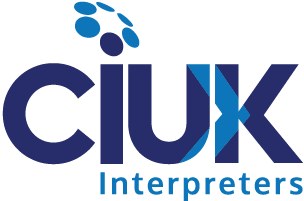A conference at London’s University of Westminster saw close to 200 international interpreters seated, for once, in the main body of the hall and expressing their own feelings instead of in their usual position “behind the glass” communicating other people’s messages.
The first event of its kind, “The Future of Conference Interpreting: Training, Technology and Research”, was the brainchild of former coordinator Christine Adams, a freelance interpreter based in Geneva and Coordinator of Professional Studies, Conference Interpreting at the University of Westminster. “It seemed to me that those of us training interpreters and working as conference interpreters should think about the future, given factors such as the growing importance of English, the enlargement of the European Union and the booming economies of China and India,” she says. “The focus was on the practical concerns of trainers and practitioners and getting conference interpreters together to think about their profession in the broadest sense.”
Speakers and panellists included lecturers in interpretation at European, Canadian and Chinese universities, representatives from the interpretation and language service departments at the US Department of State, the European Commission, the European Parliament and the United Nations Office in Geneva as well as freelance interpreters who are also involved in training and research. Behind the glass, in the interpreters’ booths, were some recent interpretation graduates from Westminster, Paris and Geneva, interpreting the multi-lingual sessions in English, French, German and Spanish.
One of the main concerns discussed was the growing use of English at conferences where interpretation is provided. Interpreters often find presentations by non-native speakers of English (NNSs) difficult to understand and become stressed at not being able to do their job “properly”. In addition, students need to be trained to understand different “brands” of English as used in different parts of the world and be able to interpret not only from English into their national language but vice versa (known as “retour”) when interpretation is not available in every delegate’s language.
Technology is also changing the face of interpretation and while the concept of remote interpretation (RI), where the interpreters don’t have to travel to the conference location, is welcome, cost-cutting news for event organisers, interpreters feel their service might suffer if they can’t see the speaker and follow his or her body language. Even if they are in the room, impromptu drafting on monitors can create problems if the screen is angled away from them and they can’t see it. Again, if this is being done in English by NNSs, it was suggested an interpreter could better assist by stepping out of the booth to give consecutive interpretation because, thanks to his training and broader understanding, he may more easily understand what the speaker is trying to say.
The over-riding message at the conference was that interpretation is all about communication, not word-for-word translation. “Communicating is what we do,” emphasises Christine Adams. “The conference brought to the fore that things are changing but if we adapt and make sure our courses keep up with the changes, there is still a very positive future ahead for conference interpretation in all its forms.”
Adams, like the majority of top interpreters, is a member of the Geneva-based International Association of Conference Interpreters (AIIC), founded more than 50 years ago when simultaneous interpretation was beginning to be used more widely. Historically, AIIC interpreters, like members of the legal profession, did not advertise their services and became known by word of mouth. With globalisation this is no longer feasible and in Britain an independent, non profit-making company called Conference Interpreters UK (CIUK) acts as a contact point for those wishing to hire AIIC members.

